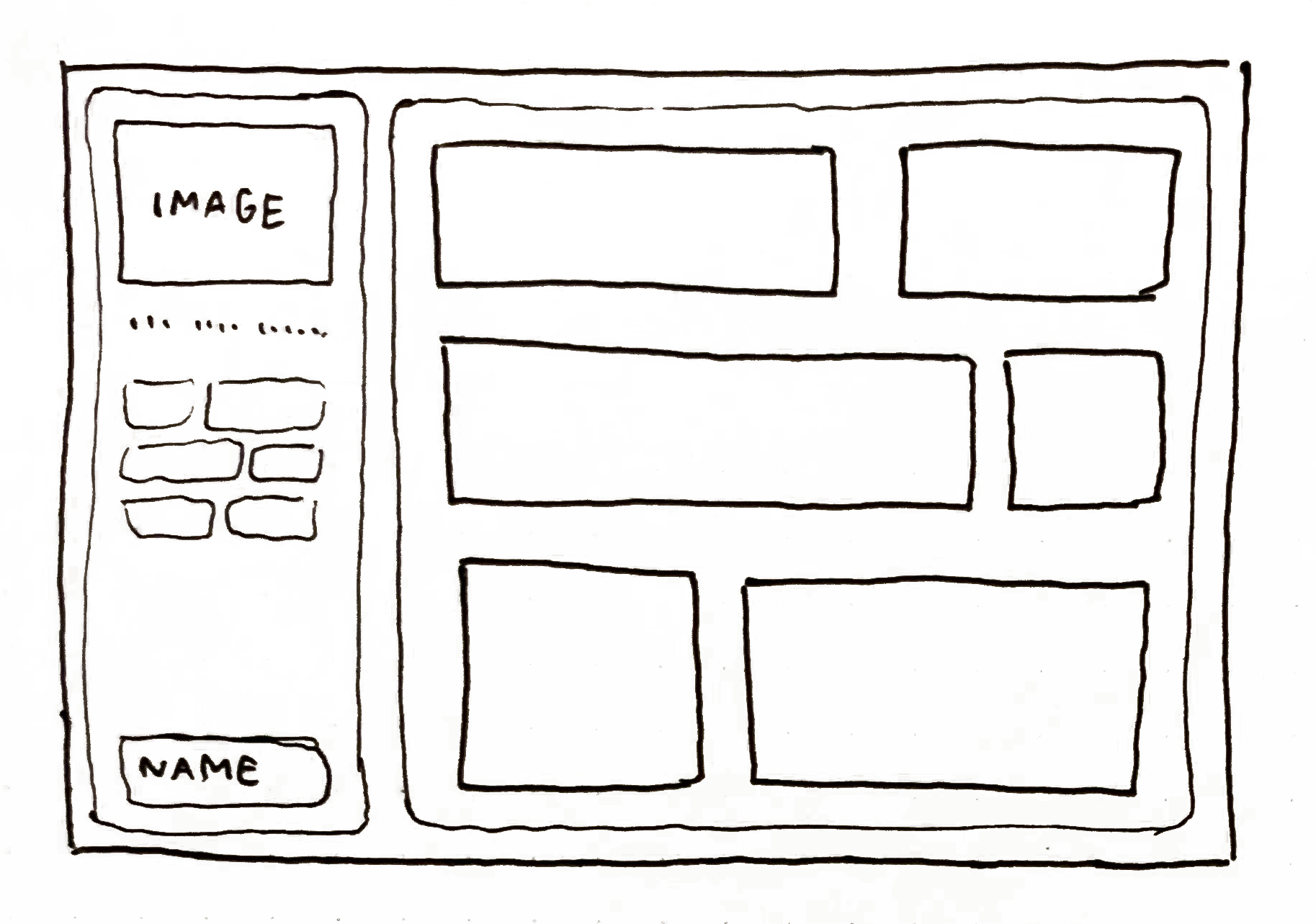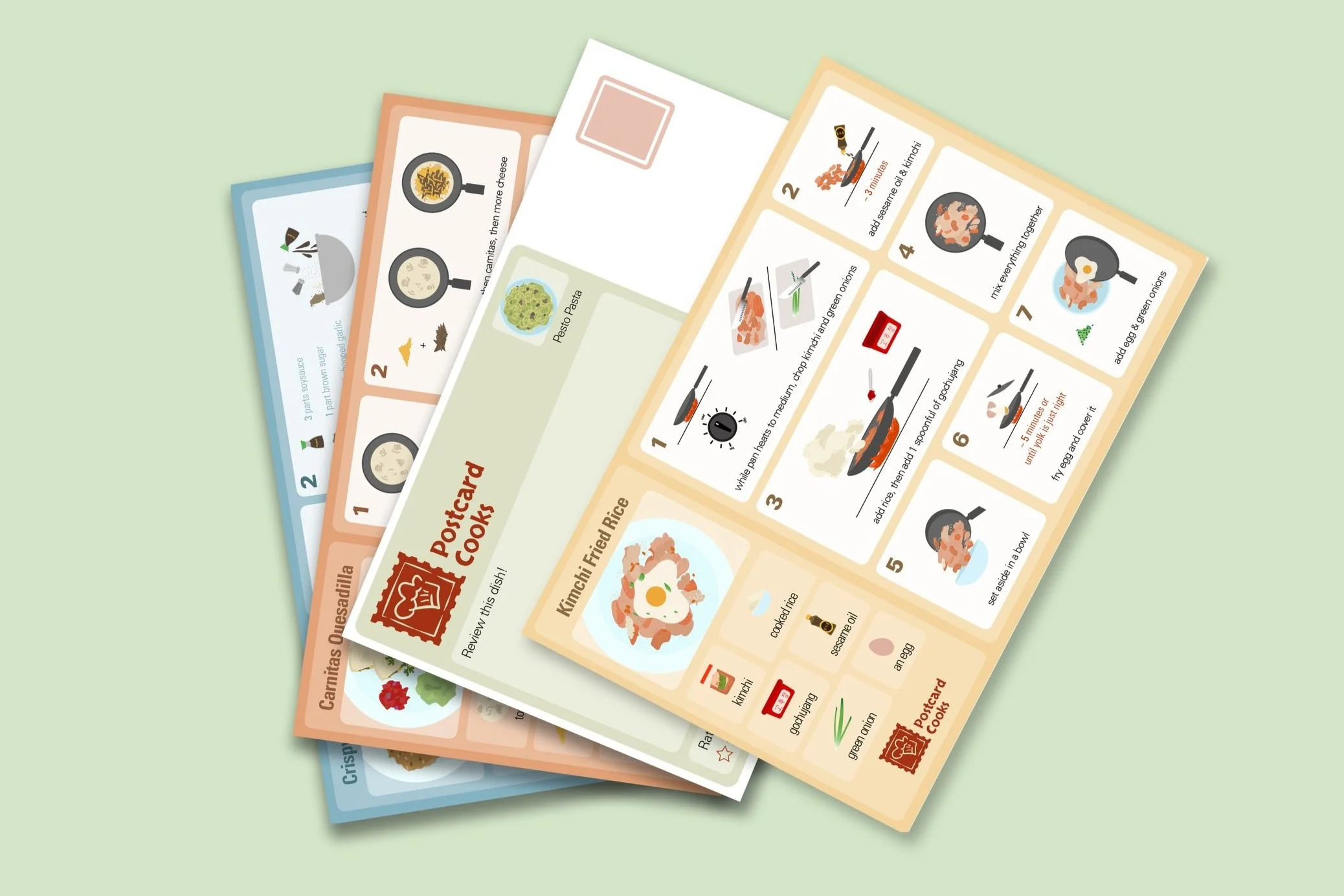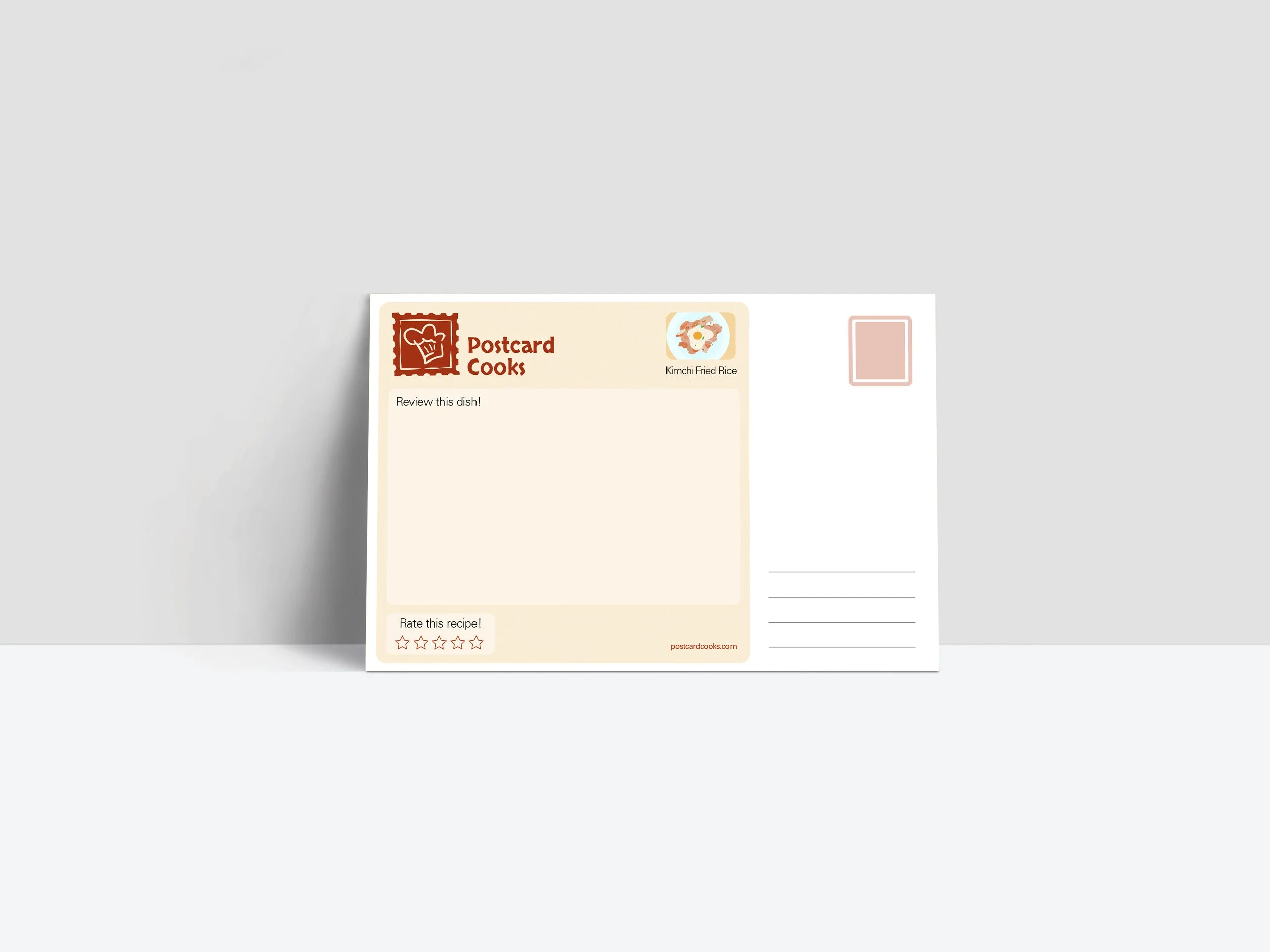* Postcard Cooks
* Postcard Cooks
a collection of visual recipes in postcard format, meant to connect people through the joy of cooking
the approach
the design process
With visual recipes, steps are illustrated, which indicate a clear chronological order for each step.
Simplifying recipes makes them more approachable and can make cooking feel less daunting. Avoiding exact measurements, such as "2 tablespoons" or "3/4 cups," makes a recipe feel more familiar. Using language, such as “spoonful” feels more concrete and understandable.
Another major factor that discourages people from wanting to cook is washing dishes. By following one-pot recipes, there are fewer dirty dishes and a delicious meal.
As an illustration-heavy project, it’s important to find a balance that is appealing and easy to follow. The key is to illustrate simple recipes, keeping the primary audience in mind.
The first version had a static grid, with a large amount of negative space that wasn’t used efficiently. One of the biggest limitations for this project was space, so it’s important that all available space is used strategically to communicate the message clearly.
the visuals
In the revision, minimizing negative space helped make room for more text. A modular grid becomes the backbone of the layout, allowing for different widths to accommodate the text and visuals. Different sized areas for each instruction created a better sense of flow and direction, thus making it easier to follow.
The backside of the recipe follows a convention similar to normal postcards. These are designed to be more related to the theme of rating dishes, from a scale of one to five. Like all postcards, the back side is meant to be written on, the perfect space for a detailed review of the dish.
A brand identity is established to keep a consistent element throughout all the postcards. Although a simple product, developing a strong brand for this piece encourages people to want to learn to cook. A coherent message with a clear mission is the best way to be consistent.
the function
The collection includes four postcards, each with a different recipe. After cooking, eating, reviewing the dish, users can send the postcard to a friend or family member. Once received, the recipient can read the review and try the recipe for themselves. This gives another meaning to a “shared meal” without the limitations of space. It encourages the users to appreciate cooking as a skill, an experience, and a way to connect with people anywhere.
cook, review, share
* the final product
* the final product
anyone can cook?
Like any skill, cooking is something one learns, from young adults to novice home chefs; but sometimes, the greatest struggle for beginners is following a recipe.
Poorly written recipes can discourage young people from wanting to learn to cook. Recipes are meant to help people cook, but if they’re hard to follow, then they’re not helpful at all.
Traditional recipes are text heavy and can be ambiguous to some, especially to those just learning to cook. Some people are visual learners, and the paragraphs of text can seem overwhelming.
Visual recipes are intuitive and beginner-friendly since they focus on images more than words.
different ways of learning
sharing a meal, anywhere
As postcards, these visual recipes can be sent to friends and family across the world. Cooking, typically an individual activity, can become a shared experience by mailing a recipe card with your review.
Interviewing people with little cooking knowledge is the foundation of a successful recipe. Understanding their problems and struggles in the kitchen will shape the form and content.
The key points that came up from the interviews were: written instructions can be ambiguous, using exact measurements can feel mindless, and one-pot recipes are the easiest.














